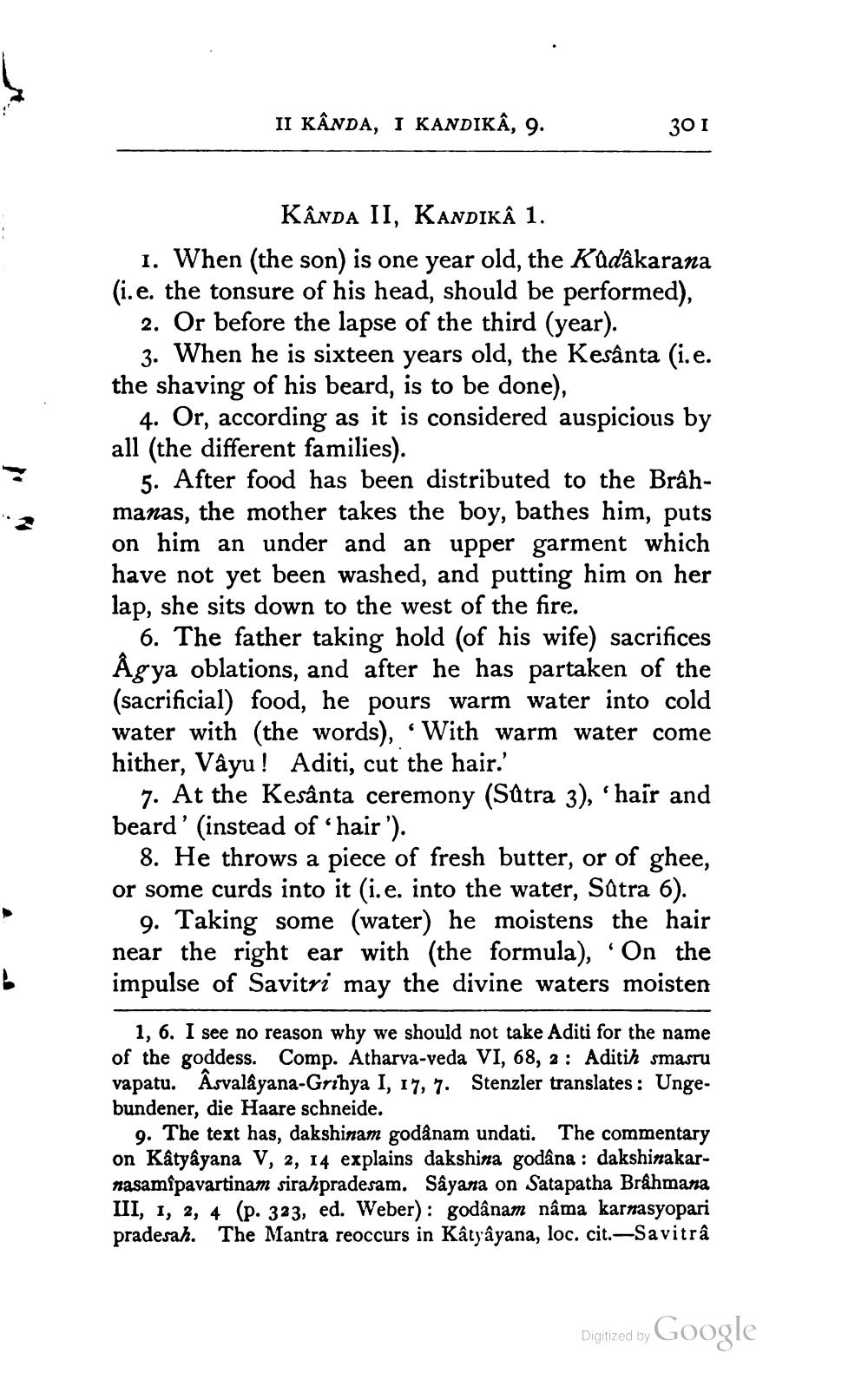________________
II KÂNDA, I KANDIKÂ, 9.
301
KÂnda II, KANDIKÂ 1. 1. When (the son) is one year old, the Kadakarana (i.e. the tonsure of his head, should be performed),
2. Or before the lapse of the third (year).
3. When he is sixteen years old, the Kesânta (i.e. the shaving of his beard, is to be done),
4. Or, according as it is considered auspicious by all (the different families).
5. After food has been distributed to the Brâhmanas, the mother takes the boy, bathes him, puts on him an under and an upper garment which have not yet been washed, and putting him on her lap, she sits down to the west of the fire.
6. The father taking hold (of his wife) sacrifices Agya oblations, and after he has partaken of the (sacrificial) food, he pours warm water into cold water with (the words), With warm water come hither, Vâyu! Aditi, cut the hair.'
7. At the Kesânta ceremony (Satra 3), 'hair and beard' (instead of hair ').
8. He throws a piece of fresh butter, or of ghee, or some curds into it (i.e. into the water, Satra 6).
9. Taking some (water) he moistens the hair near the right ear with (the formula), 'On the impulse of Savitri may the divine waters moisten
1, 6. I see no reason why we should not take Aditi for the name of the goddess. Comp. Atharva-veda VI, 68, 2: Aditih smastu vapatu. Asvalâyana-Grihya I, 17, 7. Stenzler translates: Ungebundener, die Haare schneide.
9. The text has, dakshinam godånam undati. The commentary on Katyayana V, 2, 14 explains dakshina godâna : dakshinakarnasamipavartinam sirahpradesam. Sâyana on Satapatha Brahmana III, 1, 2, 4 (p. 323, ed. Weber): godânam nâma karnasyopari pradesah. The Mantra reoccurs in Kâtyâyana, loc. cit.-Savitrâ
Digitized by Google




